Myanmar
Things to DO
Yangon
As Myanmar's capital city, Yangon is comparatively young - it only became the capital in 1885 when the British completed
the conquest of northern Myanmar and Mandalay's brief period as the centre of the last Burmese Kingdom ended.
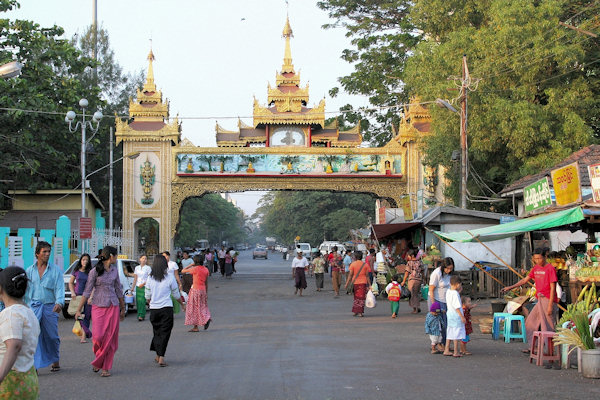 |
|||||
In 1988 around 15% of Yangon's city centre population - all squatters - were moved to seven "myo thit" (new town) norteast
of the city centre. Many of the old colonial buildings once occupied by the squatters have now been refurbished for use as offices,
businesses and apartments.
The city has changed dramatically following the 1989 banishment of socialisme.
Starting in the early 1990's, the governement began sprucing up the city's appearance by cleaning the streets and painting many
public buildings.
Since 1992, when the relatively, procapitalist General Than Shwe took power, new cars and trucks have taken the city roads,
mobile phones are commonly seen in the city centre and satellite dishes dot the horizon.
To try and keep the blood-red spittle off the streets, the selling of betel nut was banned in 1995. As with many such decrees, the
results have been negligible.
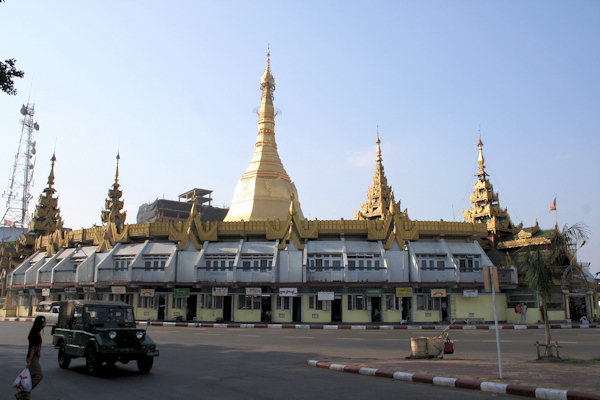 |
|||||
In the centre of the City stands the Sula Paya; a 2.000 year old golden temple.
The central stupa's name, Kyaik Athok, translates in the Mon language as "The stupa where a Sacred Hare relict is
enshrined".
As with many other ancient Mayanmar shrines, it has been rebuilt and repaired many times over the centuries, so no-one realy knows
exactly when it was built.
The golden zedi is unusual in that its octagonal shape continiues right up to the bell and inverted bowl.
It stands 46m high and is surrounded by small shops and all the familiar non religous activities that seem to be a part of every zedi
in Myanmar.
Besids its significance as a landmark and meeting point, maybe its most mundane function is as a milestone from which all adresses
to the north are measured.
The Shwedagon Paya (hight 98m) has achieved iconic status for Yangon. However the majority of the pilgrims visiting
Shwedagon are local, its meaning deeply religious and rather them beeing a beacon of the modern, it proudly stands for the ancient
and timeless.
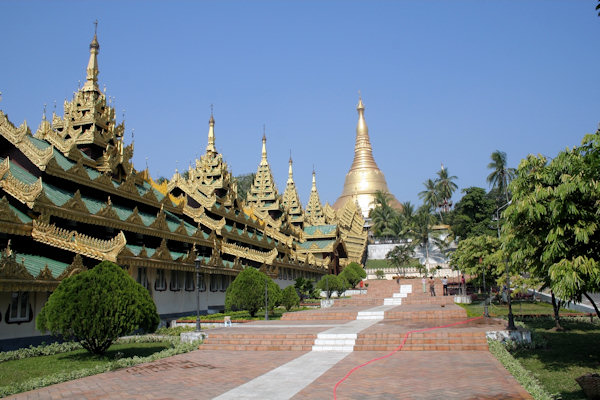 |
|||||
In the heat of the day, the stupa glitters bright gold and when the sun sets it casts its last rays on the soft orange dome
and a swarm of sparrows migrates from the Shwedagon grounds until they return the following morning.
It can be quiet and comtemplative, or colourful and raucous. Kipling called it "a golden mystery ..... a beautiful winking
wonder".
For Mayanmar Buddhist, it is the most sacred off all Buddhist sites in the counrty, one which all Burmese hope to visit al least once
in their lifetime.
According to legends, this stupa is 2500 years old, but archaeologists suggest the original stupa was built by the Mon,
sometimes between the 6th and 10th centuries.
In common with many other ancient zedi in earthquake-prone Myanmar, it has been rebuilt many times and its current form
dates back only to 1769.
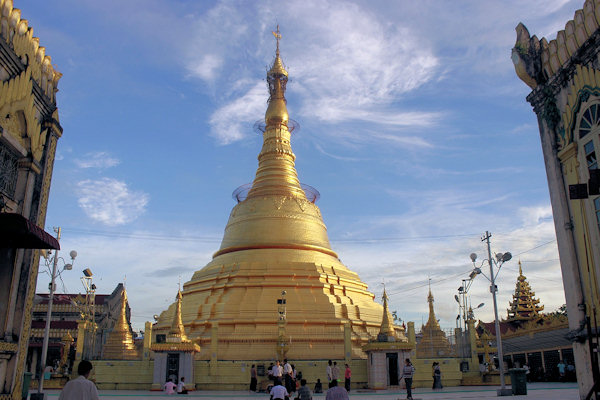 |
|||||
Over 2.500 years ago in the 6th century B.C. (Gotama) Buddha was enlightened at the foot of the Bodhi-Tree in Buddha Gaya, India.
Two trader brothers Tapussa and Bhallika journeyed to India. The brothers paid reverence to the Buddha and took refuge in the
Buddha and Dhamma (Buddhist Doctrine).
The Buddha knowing that in centuries to come the Buddhist Doctrine will flourish in Myanmar, with his right hand gave away eight strands
of his sacred hair relics to the two brothers.
The ship carrying the eight strands of the sacred hair relics arrived at the Botataung Bank on the Yango River. King Okkalapa with
the court officials and a guard of honour comprising of one thousand military officers came down to the Botataung Bank and took possesion
of the relics from the two brothers.
King Okkalapa placed the hair relics on the very site the present Botataung Pagoda was built and allowed the people to pay homage
for six months. As a token of gratitude, king Okkalapa give one hair relic to Tapussa, who enshrined the relic and built this pagoda.
The rest of the hair relic were distributed elsewhere.
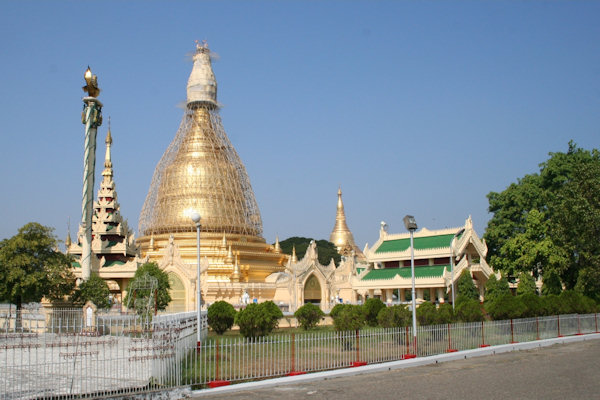 |
|||||
The Maha Wizaya Pagoda was built for the occasion of the first assembly of the unified orders of Theravada Buddhism in Burma
and paid for with donations from Buddhists from across Burma.
The "hti", an ornamental spire shaped in the form of an umbrella on top of the pagoda was donated by Ne Win, the country’s
head of state and military leader. The pagoda is thus also referred to as “The General’s Pagoda”.
The Chaukhtatgyi Paya is known for its enormous 65 meters long and 16 meters high Reclining Buddha image.
The original image was completed in 1907, but it was suffered damage due to climate over the years. In 1957 it was demolished and rebuilt
to this structure in 1966.
Prince Minyedeippa donated the original Nga Htat Gyi Buddha in 1558. A Buddha, 13.9 m on a pedestal, 9.1 m high and 14 m
wide was erected at the temple in 1900. This is one of the largest and highest Buddha images in a shrine in Myanmar.
Bago
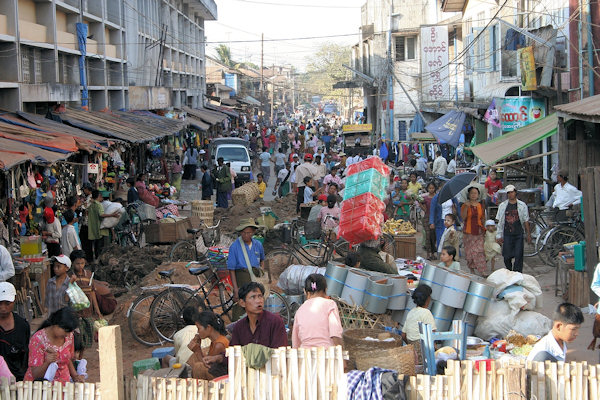 |
|||||
Bago was reputedly founded in AD 573 by two Mon princes from Thanton, who saw a female swan standing on the back of a male
swan on an island in a hudge lake. Taking this to be an auspicious omen, they founded a royal capital called Hanthawady
(meaning the Kingdom of the Swan).
During the later Mon dynastic period (1287-1539), Hanthawady became the centre of the Mon Kingdom of Ramanadesa, which
consisted of all southern Mayanmar.
The city was frequently mentioned by early European visitors - who knew it as Pegu - an important seaport.
In 1740 the Mon, after a period of submission to the Taungoo, re-established Bago as their capital, but in 1757 King Alaungpaya
sacked and utterly destroyed the city.
King Bodawpaya who ruled from 1782 to 1819 rebuilt it to some extent, but when the river changed its course the city was
cut off from the sea and lost its importance as a seaport. It never again reached its previous grandeur.
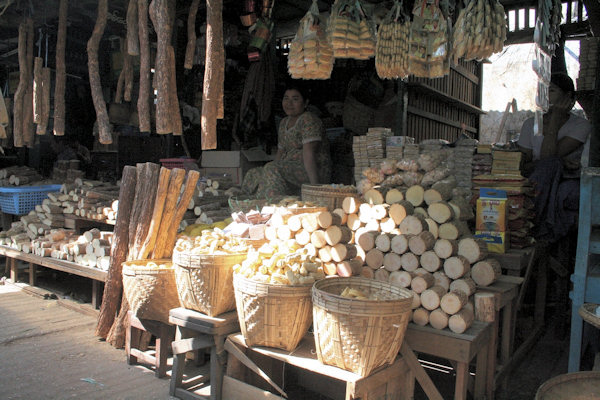 |
|||||
The Thanakha (“Limonia acidissima”) is a very useful plant and it plays a great part in the field of Myanmar
indigenous medicine - the leaves are used as a remedy for epilepsy in some regions and the cosmetic form cures pimples and acne.
The bark obtained from these trees is so fragrant that the ladies of Myanmar like them very much to use as a sun screen/make-up.
Thanakha agrees with Myanmar’s natural environs and it is recognised to be of great help to bear the heat of the sun or to protect
from the wind especially for those who have to work under direct sunlight or in windy conditions such as the ladies who work in
the paddy fields: they wear thick layers of Thanakha because of the intense heat.
The tradition of wearing Thanakha will be cherished for generations. Everybody loves to put on Thanakha after having a bath at the
end of a long, tiring day leaving us cool, fragrant and refreshed.
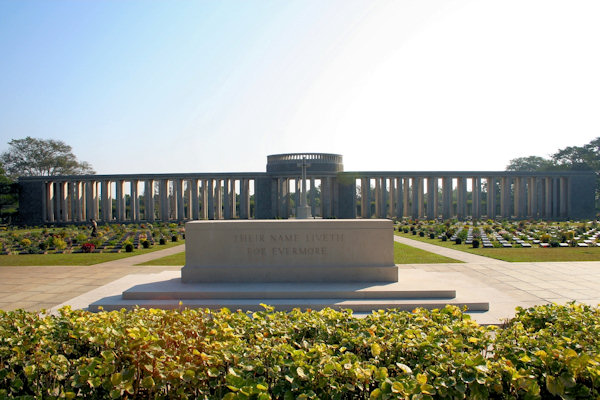 |
|||||
About 40 km north of Yangon, on the road to Bago is the huge Taukkyan War Cemetry with the graves of 6.374
allied soldiers who died in the Burma and Assam campaigns of WWII.
There is also a memorial bearing the names of the almost 27.000 soldiers who died with no known grave.
The post-war political unrest in Burma meant that the War Memorial Cemetery could not be opened until 1951. Every attempt was
made by the Commonwealth War Graves Commission to bring in the remains of those who died in different parts of the country, and
the graves are grouped into different battles, namely Meiktila, Akyab (Sittwe), Mandalay, and Sahmaw.
Maintained by the Commonwealth War Graves commission, the cemetery is beautiful landscaped.
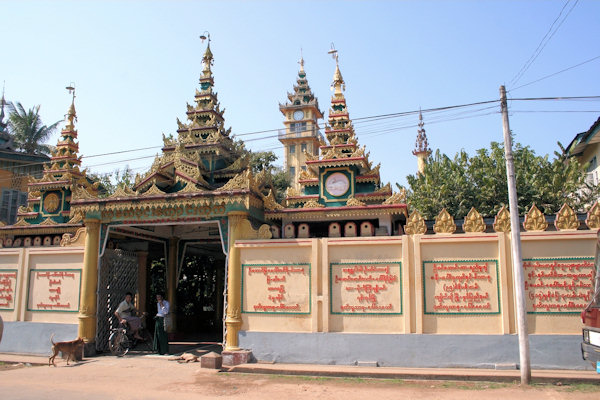 |
|||||
North of the main town centre, near the eastern bank of the river, is one of the three largest monastries in the country,
Kha Khat Wain Kyaung.
Socially, ever Myanmar male is expected to take up tempory monastic residence twice in his life; once as a "samanera" (novice monk)
between the ages of 10 and 20 and again as a "hpongi" (fully ordained monk) sometime after the age of 20.
The monastrie houses about 1.500 monks and watching the long line of monks and novices file out of the monastery in early morning for
their daily rounds of alms is quite a sight.
You're free to wander around the eating hall but it's recommended to show some respect while the monks are eating theit meal in silence.
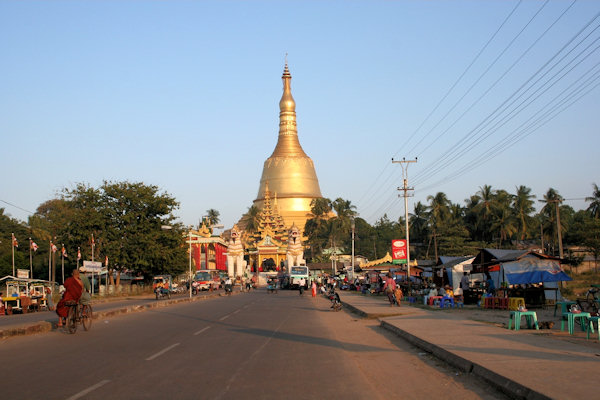 |
|||||
Shemawdaw Paya
The Shewmawdaw is said to be over 1.000 years old and was originally built by the Mon to the height of 23m to enshrine two hairs
of the Buddha.
The 1930 earthquake completely levelled the stupa and for the next 20 years only the hudge earth mound of the base remained.
Reconstruction of the paya commenced in 1952 and was completed in 1954, when it reached its present height of 114m.
Kyaik Pun Paya
Built in 1476 by King Dhammazedi, Kyaik Pun Paya consists of four 30m-high sitting Buddhas placed back-to-back around a huge,
square pillar.
According to legend, four Mon sisters were connected with the construction of the Buddhas; it was said that if any of them should
marry, one of the Buddhas would collapse.
One of the four Buddhas disintegrated in the 1930 earthquake, leaving only a brick outline. It has sice been fully restored.
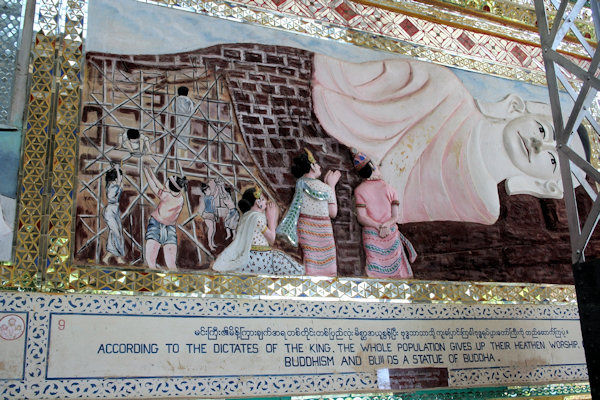 |
|||||
Shwethalyaung Buddha
This reclining Buddha measurs 55m long and 16m high.
The Shwethalyaung is reputed to be one of the most lifelike of all reclining Buddhas. The Burmese say the image represents Buddha in a
"relaxing mode" - instead of "parinibbana" (death - since the eyes arewide open and the feet lie slightly splayed rather
than parallel.
Near the hudge head of the image stands a statue of Lokanat (Avalokitesvara), a Mahayana Buddhist deity borrowed by Burmese Buddhism.
Hintha Gon Paya
According to legend, this was the point rising from the sea when the mythological bird "Hamsa" landed.
The female Hamsa, standing on the back of a male Hamsa is the symbol for Bago.
At a deeper level, the symbol honours the compassion of the male Hamsa in providing a place for the female to stand in the middle of
a lake with only one island.